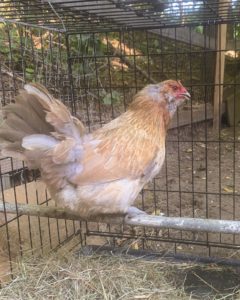If you’re serious about raising chickens, the day will probably come when you want to add more birds to your flock. Most fledgling backyard farmers start out cautiously, with small flocks, but before long, we fall in love with our ladies and the eggs they lay for our tables and decide to add to our feathered families.
A backyard farmer’s motivation for wanting to add hens to an existing fold can also be less cheerful. Chickens live for 5 to 10 years on average, though some have been known to make it to 20. Being a spoiled backyard chicken raises your ladies’ chances of having long lives. But however happy your hens may be, they will lay fewer eggs from about two years onwards, and they often stop laying completely at age five. At commercial chicken farms, hens are usually slaughtered at around age two to make room for younger layers. While it is rare for a backyard farmer to deny a hen her retirement, many of us do add younger hens to fill the empty egg box.

There are other losses to make up for. We have had a tough year on our little backyard farm. One of our goat Buttercup’s three spring kids died at birth. Then we lost 14 of our 16 chickens during Tropical Storm Ida. Overnight, a falling branch damaged one of the doors to our coop, giving a pack of coyotes an opening to silently raid the run at dawn. The quiet when we came out at 6:30 a.m. to feed our birds was devastating.
While our usual routine has been to add a whole new flock in spring, we knew we had to find friends quickly for our two remaining terrified hens. First, chickens crave companionship and do best in groups of at least three. And in winter, they need each other’s body heat to warm their coop.
We found pullets from a healthy local flock. Then we gathered advice about introducing new birds to our established hens. Pullets should be at least 12 weeks old before beginning the process of getting acquainted with your resident girls.
The main challenge is that chickens hate change even more than we humans do. Stealth is involved, at least at the outset. The new birds are released into their protected section of the run after sundown when your other chickens are happily snuggled into their roost. This gives newcomers a few hours to adjust to their surroundings without encountering your flock — even through chicken wire.
If you have a very small flock and are only looking to introduce a single new bird, a large dog crate with a drinker, a feeder, and a stick as a roost will do nicely as a separate cage for the newcomer. That way your flock can meet and greet the new girl without being able to attack her.
While she’s in her crate, try to gauge the personality of your newcomer to see how she will fit into the pecking order. A confident new bird is going to fare well — hens will fight, even drawing blood when it comes to showing who’s the boss.
Meanwhile, there are several ways you can distract your ladies from their initial displeasure with the new chick in the flock. If you allow your chickens to range during the day, keep the new hen enclosed in the run at first while the flock roams. After about a week, it’s ideal to allow the hens to range together for about an hour a day while you are nearby.
Plan to allow your expanded flock to begin to mingle after five to seven days of living in their separate spaces, depending on how the interaction through bars is going. The hens should gradually seem calmer in each other’s presence. Be ready to offer distractions such as treats and maybe a new ramp, branch, or a small mirror to shift your hens’ focus from the competition.
However smooth you try to make the transition, though, you should expect some bullying as your hens establish their new pecking order. If it is relentless, it’s better to remove the bully for a time out, therefore demoting her from her place at the top of the pecking order, than it is to remove the new hen. If you’ve made a gradual introduction, it is rare for a flock not to sort things out after they’ve mingled for a few days and be transformed from coop to co-op.



